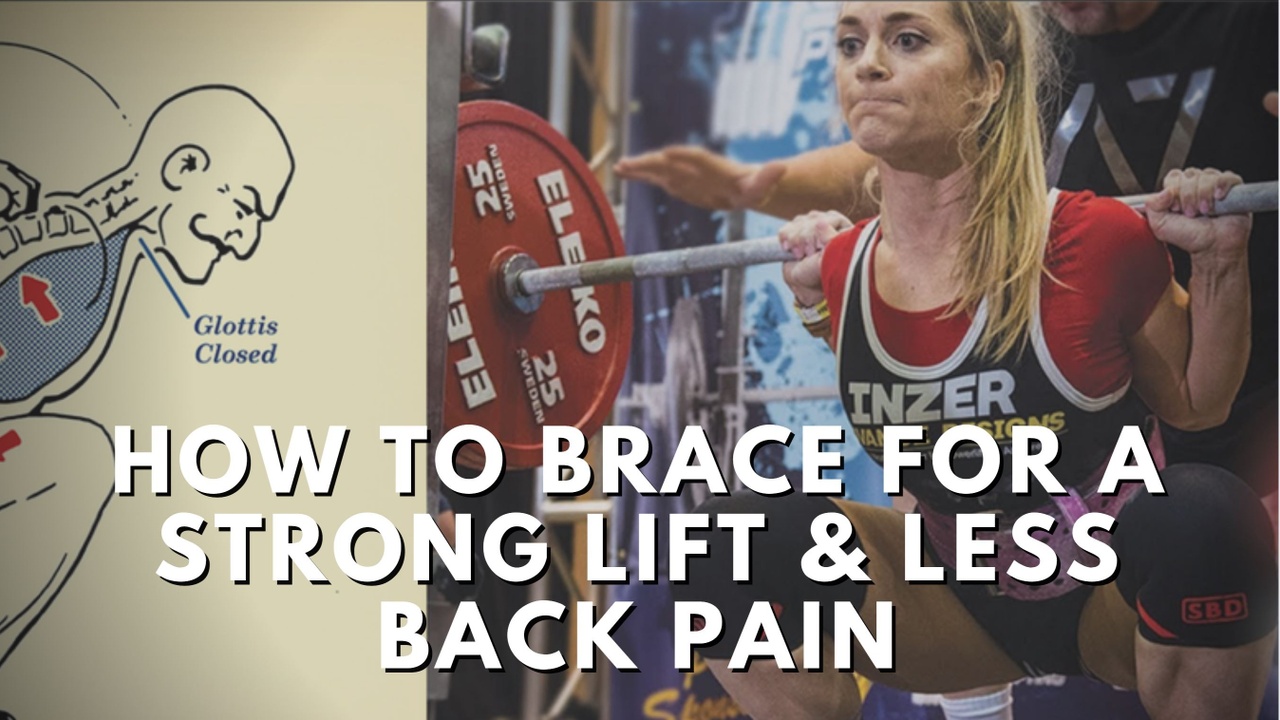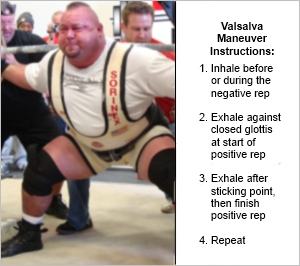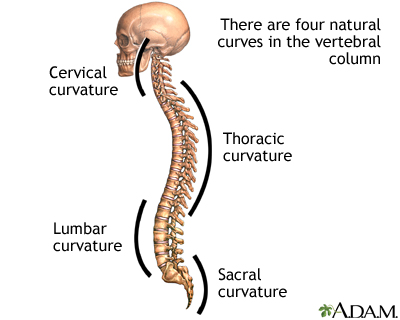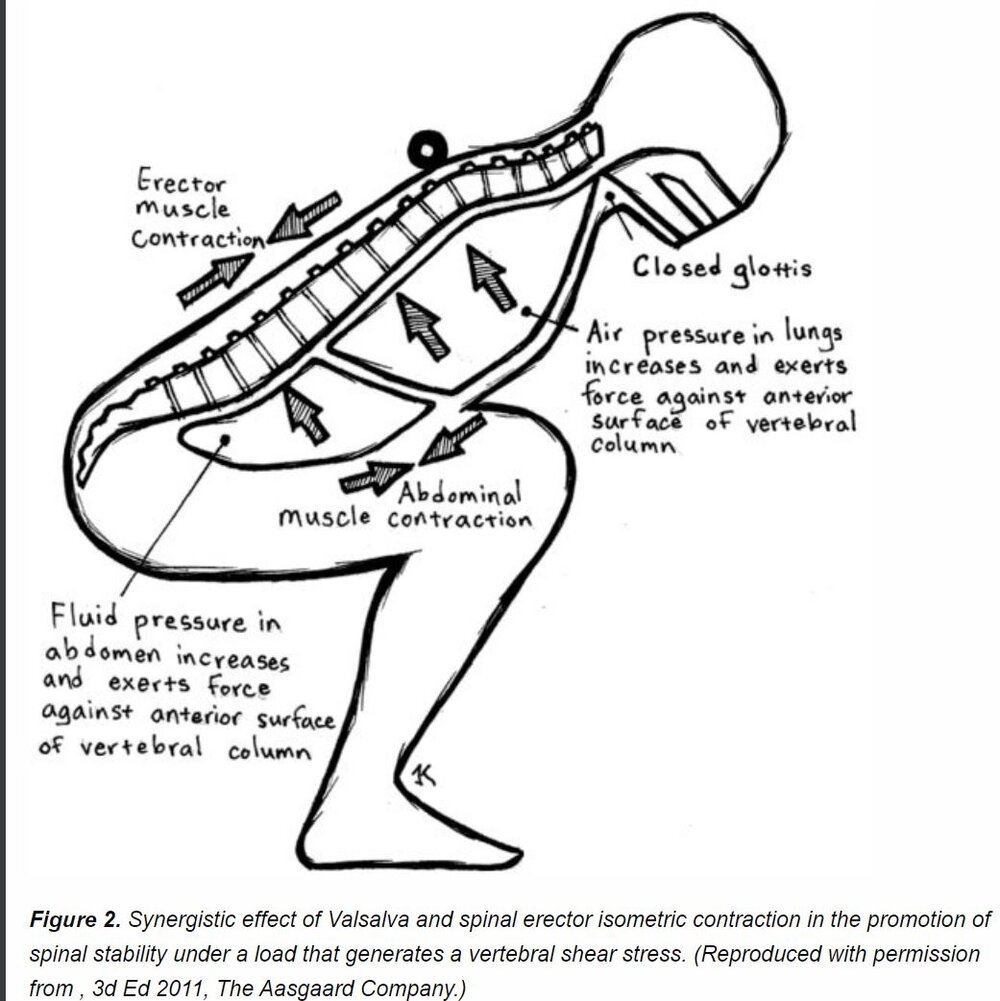How To Brace For A Strong Lift - Get More Abs & Less Low Back
Aug 30, 2021
Bracing is a necessary technique for maximizing stiffness of tissues within the body to ultimately maximize the amount of weight we can lift without any "force leakage". Bracing often takes place in heavy squats, deadlifts, and even olympic weightlifting movements.
If we want to lift the most amount of weight in the most safe way possible, it makes sense to see those common cues of "stay tight!" and "brace your core!", but how can we do that in the most safe and efficient manner possible?
In this article, I'm going to discuss:
- The classic form of bracing and why it might not be ideal for you
- The biomechanics of a neutral spine
- How to improve your bracing strategy for long-term health & performance goals
The Valsalva Maneuver
The Valsalva technique is the classic brace, popular within many gyms and Powerlifting environments. The method involves the following:

The goal of this maneuver is to create as much stiffness and intra-abdominal pressure as possible.
Intra-abdominal pressure is important because it helps create a high amount of muscle contractions and pressure gradients throughout your core to stabilize your spine:
If you are staying as tight as possible while going through the range of motion of (for example) a squat, then in theory you will not have much risk of having tissues be "loose" or leaking force. This maximizes the amount of muscle contribution to the lift.
While this makes sense for athletes who need to use as short of a range of motion as possible to lift the most amount of weight, this may actually be less helpful for some athletes and recreational lifters.
In order for muscles to be recruited for muscle building and moving joints optimally, they need to stretch first. This is a classic idea in Length-Tension relationships.

Essentially, if you are starting a muscle in a contracted position, you won't as easily be able to stretch it and recruit it. The Valsalva Maneuver does indeed create a high amount of stabilization, but at the cost of joints moving through a full range of motion and muscles being recruited maximally. The Valsalva is great if you want a total-body contribution to lifting a ton of weight.
I want to make it clear that I am not demonizing this method. I am simply creating awareness of the pros and cons.
What Is A Neutral Spine?
A neutral spine is shown below:

We have a normal degree of Lordosis (arching) of the low back which is evened out with Kyphosis (rounding) of the upper back. This helps maximize netural Length-Tension relationships of the body as a whole.
The Valsalva Manuver produces a high amount of "extension tone", meaning the low back is significantly arched, which will create a high amount of compression of the low back because we are pushing pressure and air entirely forward in our abdomen. This may create excessive low back arching and compression of the low back (image on right):

"Neutral" is important because it allows us to have somewhere to "extend" into. If we are already starting like the lifter on the right there, how are we going to achieve the extension when we need it? You can't get somewhere you're trying to go if you're already there. This can result in over-arching the low back to find more extension, which is necessary to lift a lot of weight.
A Better Bracing Strategy
Before I get to this, I want to make clear that the Valsalva Maneuver is entirely appropriate in the right context. This is usually for very heavy lifts (around 90% or higher of your 1-rep max), and in strength sports like Powerlifting or Strongman.
However, if you find that you can't fully engage your core/abs in these lifts, or your low back is irritated afterward, try this:
In order to get a proper set-up, see this:
Give it a try and see how you feel. I've seen a lot of success with this method from anyone to recreational lifters up to some really strong individuals and athletes.
If you find you are having a hard time getting that slight degree of flexion in your upper back, try this exercise before you train:
Exercise credit: Bill Hartman. https://billhartmanpt.com/
Don’t miss out on free education
Join our email list to receive exclusive content on how to feel & move better.


